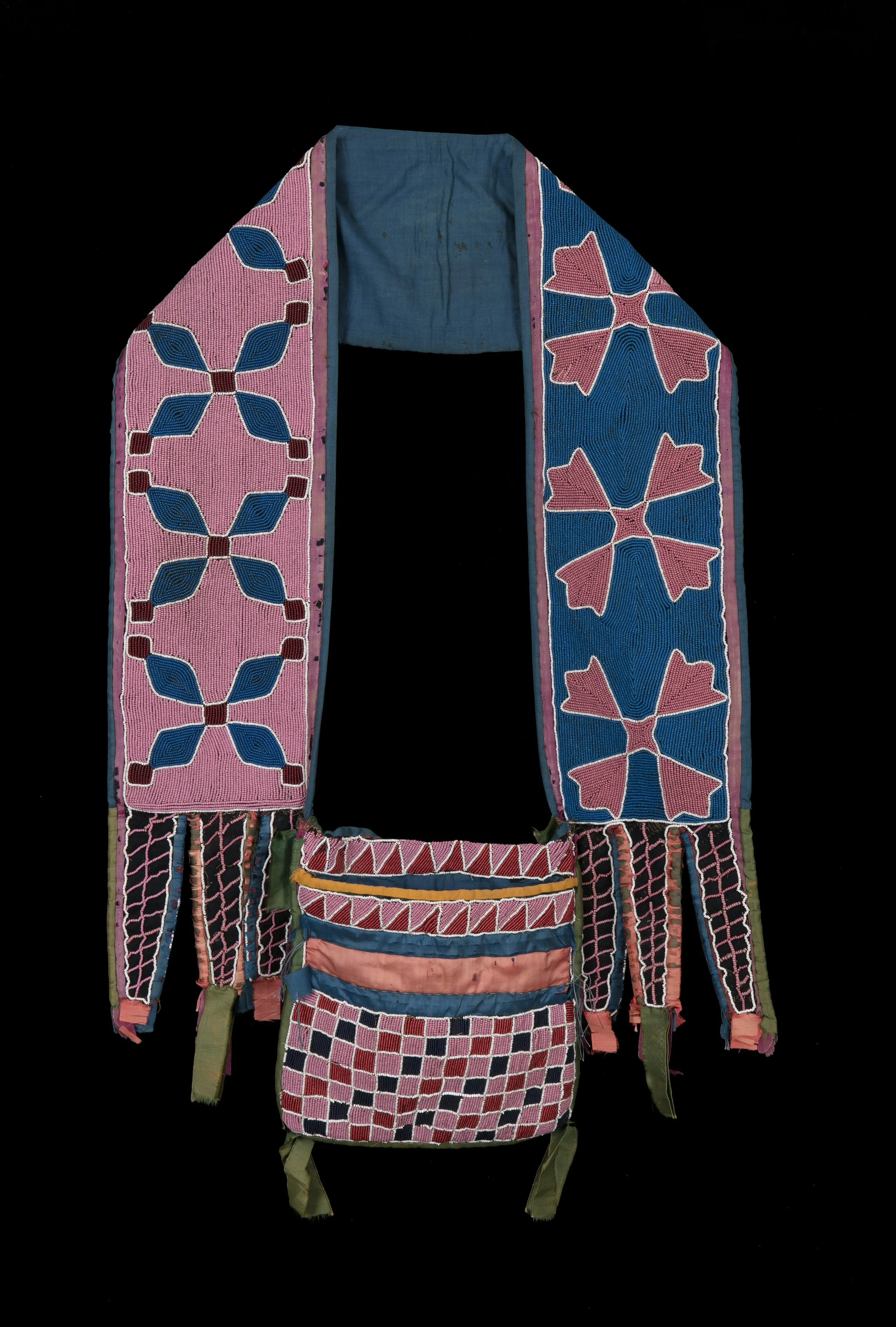Delaware Bandolier Bag, 1860 / Collected by Martha Ker Underwood, Carlisle, PA (1823-1890)
Bandolier bags can be found throughout the indigenous Woodlands, Great Lakes and Great Plains of North America. The bag’s general form - a strap and pouch - is thought to have been derived from European ammunition pouches, evolving over the centuries to take on a variety of regional forms.
Female artists manufactured them, often painstakingly for their male counterparts, in order to satisfy their need for a “pocket”. With the approach of the 20th century, however, these bags increasingly became canvases for artistic expression and social standing rather than utilitarian items.
This style of bandolier is among the most celebrated forms in American Indian Art. Examples of these bags have been extensively published; they are the anchors to many major museum collections throughout North America.
This particular bag was collected by Martha Ker Underwood (1823-1890) of Carlisle, PA. Underwood was a teacher at the Carlisle school in the 1880s. It is presumed that she collected the bag sometime around then, along with the famous Henderson Ledger Book, which now resides at the Hood Museum at Dartmouth College.
29” tall and 22” wide
Collected by Martha Ker Underwood, Carlisle, PA (1823-1890); handed down by descent; to her grandniece, Josephine Underwood Ritter, PA (1885-1946); handed down by descent; ex Dr. Robert Pamplin Jr., OR (collected 2008-2025).
#51070
This style of bandolier is today a celebrated style

